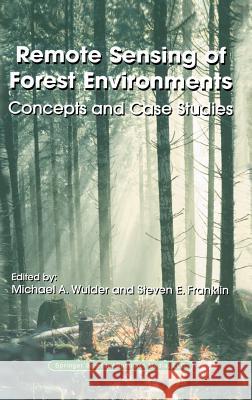Remote Sensing of Forest Environments: Concepts and Case Studies » książka
Remote Sensing of Forest Environments: Concepts and Case Studies
ISBN-13: 9781402074059 / Angielski / Twarda / 2003 / 519 str.
Remote Sensing of Forest Environments: Concepts and Case Studies
ISBN-13: 9781402074059 / Angielski / Twarda / 2003 / 519 str.
(netto: 845,42 VAT: 5%)
Najniższa cena z 30 dni: 848,19 zł
ok. 22 dni roboczych
Bez gwarancji dostawy przed świętami
Darmowa dostawa!
Successful remote sensing methods and applications are rooted in the science, art, and technology of earth observation, part of the larger emerging world of geographical information science. Sensors are increasingly sensitive to the phenomena we wish to observe and image analysis systems are increasingly able to transform the data and deliver the required information. At the same time, advances in forest science and management continue to develop momentum. A renewed commitment to understanding forests at different scales and with a process-based perspective has helped generate demand for information about forests that is feasibly acquired only by remote sensing. Remote Sensing of Forest Environments: Concepts and Case Studies is an edited volume intended to provide readers with a state-of-the-art synopsis of the current methods and applied applications employed in remote sensing the world's forests. The contributing authors have sought to illustrate and deepen our understanding of remote sensing of forests, providing new insights and indicating opportunities that are created when forests and forest practices are considered in concert with the evolving paradigm of remote sensing science. Following background and methods sections, this book introduces a series of case studies that exemplify the ways in which remotely sensed data are operationally used, as an element of the decision-making process, and in the scientific study of forests. Remote Sensing of Forest Environments: Concepts and Case Studies is designed to meet the needs of a professional audience composed of both practitioners and researchers. This book is also suitable as a secondary text for graduate-level students in Forestry, Environmental Science, Geography, Engineering, and Computer Science.











